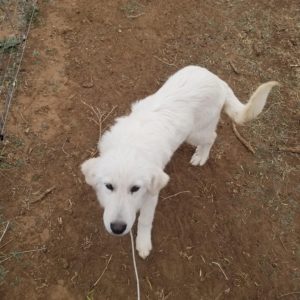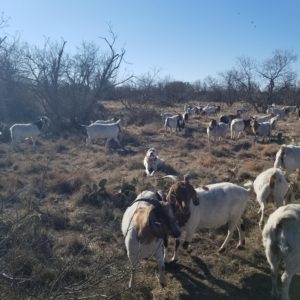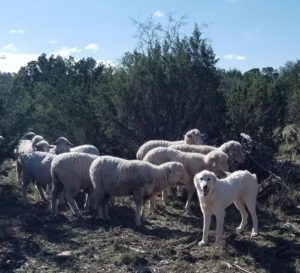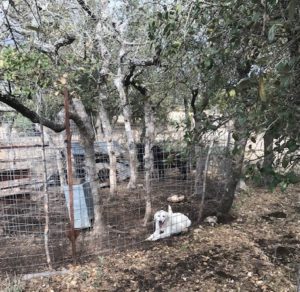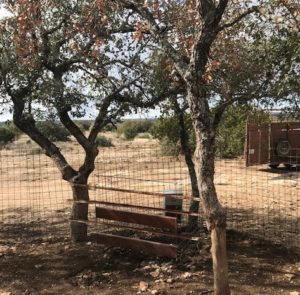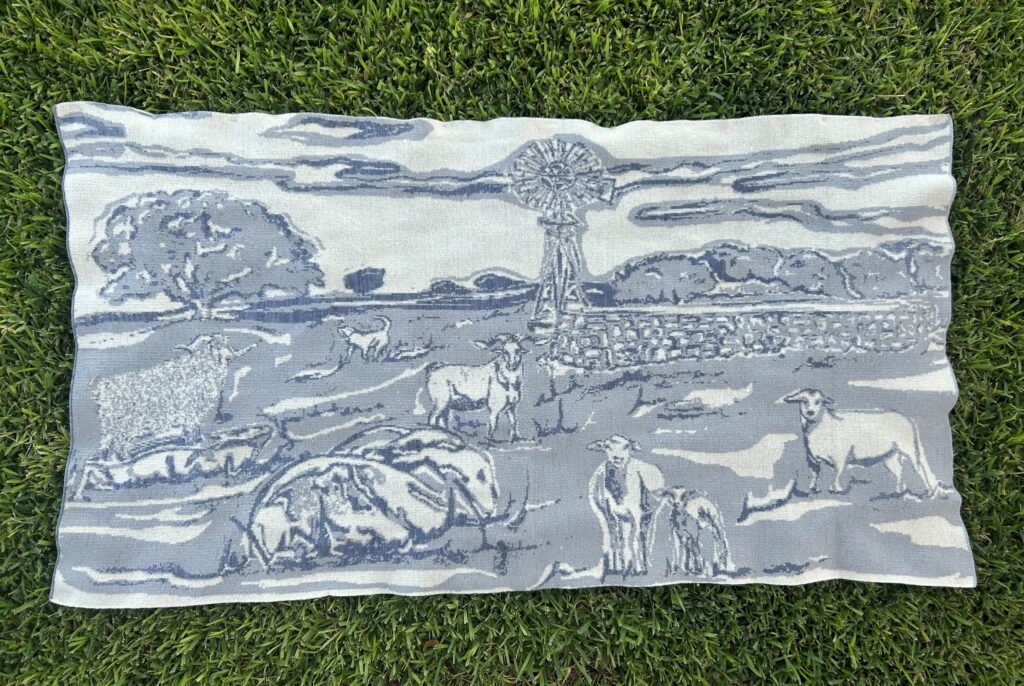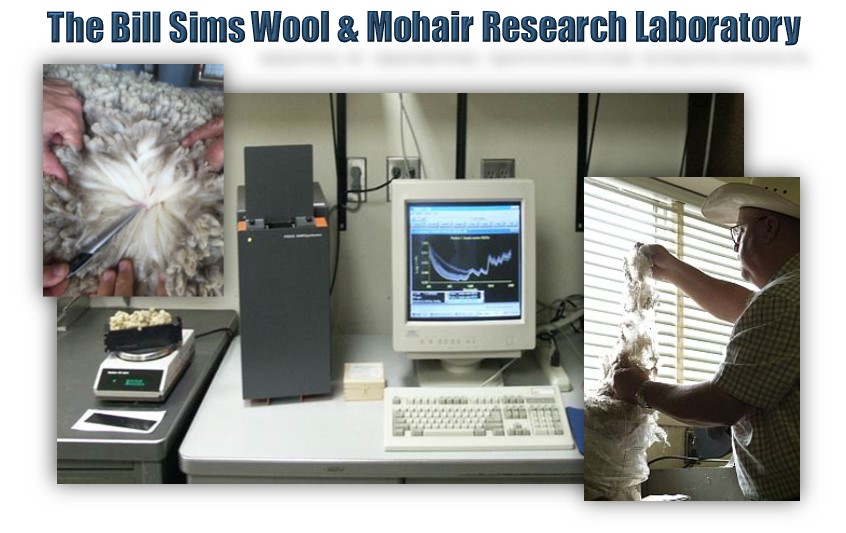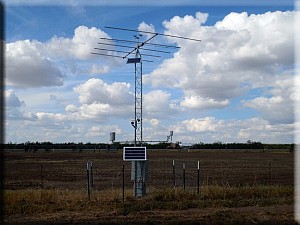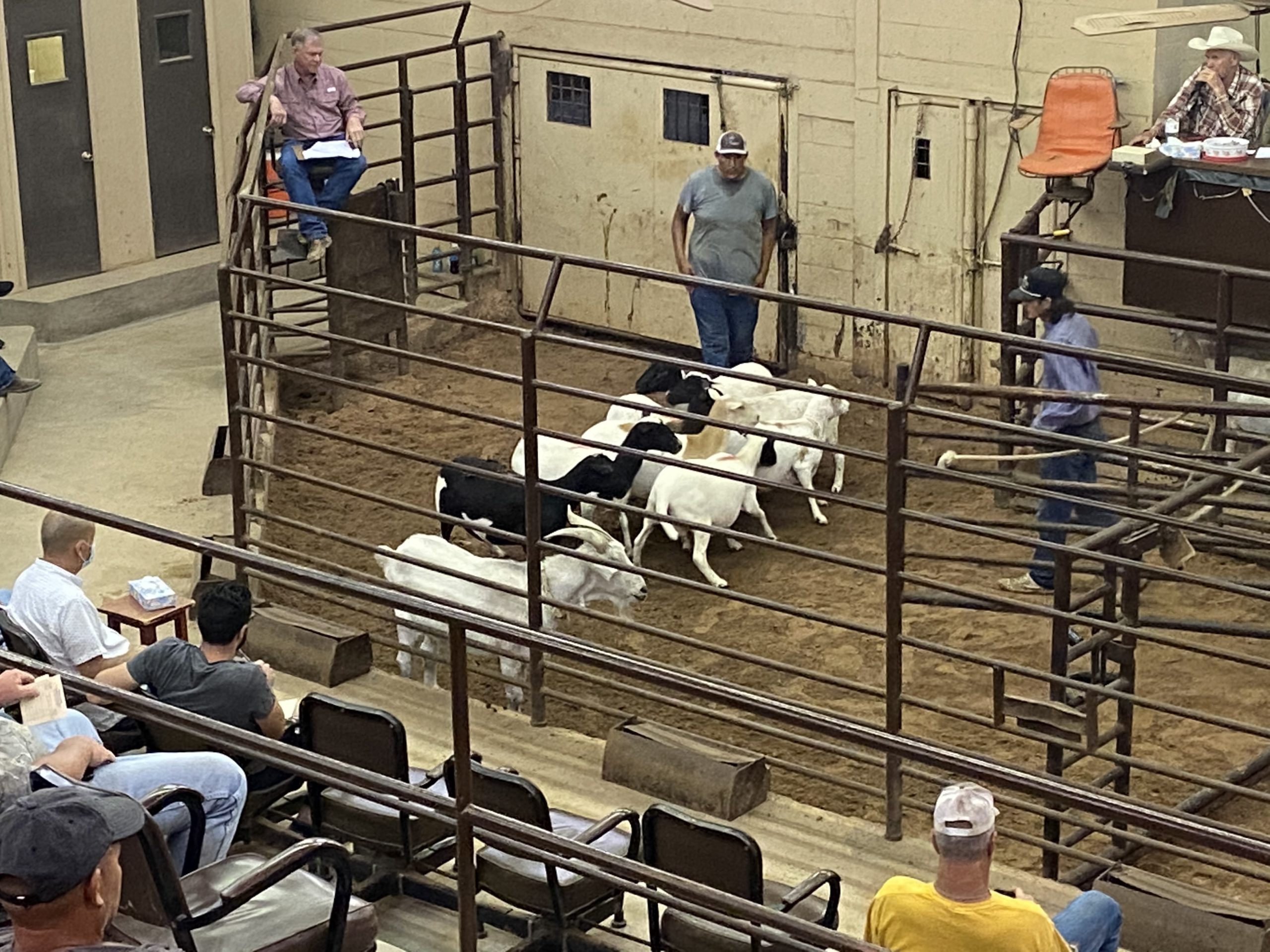Home & Work
Hopefully 2021 will prove to be a better year than 2020! I had some changes in my personal life as I know many did, some caused by Covid-19. I know I am happy for the new year to be here, sadly we are all still being affected by Covid-19 however. But with the vaccine available soon, hopefully life will return to normal in 2021.
The boys are back in college again and looking forward to their new courses. We got some projects done in December at the new house and the dogs seem to be slowly adjusting to their new surroundings. Life is definitely better living in the country though. For those that do, don’t ever take it for granted!
The Predator Board has extended the contract for an LGD Research Specialist for another two years so that we can continue to provide support for producers using LGDs. We will continue research on bonding LGDs, producer outreach and our social media platforms. We will be focusing more on outreach moving forward than research so that more educational information is produced and can be presented to producers on LGDs.
When Should You Spay/Neuter?
I often get asked by producers when they should spay or neuter their LGD or if they should at all. There is some debate on how soon this should or shouldn’t be done. We suggest that you and your veterinarian work this out, as there are pros and cons to every decision. Whether or not you should spay or neuter your LGD is a little easier to answer. Unless you are planning on breeding your LGD, then we recommend that you spay/neuter them.
Most LGD breeders would agree that the breeding instincts in LGDs is quite strong. One reason dogs may roam is because they are in heat or looking for a female to mate with. To help curb this, it’s important to spay/neuter them. Having an unwanted or unexpected litter of pups in your pasture may cause more problems than it is worth. First, your female will require more feed to nurse the pups. Second, she will be pulled away from guarding your stock during the time she is caring for and raising her pups. If pups are raised in the field without human socialization, they may become feral and be extremely difficult to handle. They may also spread disease and parasites to other LGDs if they
are not properly cared for.
To get a more in-depth perspective on the topic of spaying and neutering, I spoke with Dr. Debra Zoran DVM, PhD, DACVIM-SAIM, Texas A&M Veterinary Emergency Team member and Professor of Medicine at the Texas A&M College of Veterinary Medicine and Biomedical Sciences. Here is what Dr. Zoran had to say on this subject:
“This is a great question and with many medical decisions. There is not an absolute right or wrong answer. However, let me give you some things to consider. We do know that in medium to large breed dogs the risk for early closure of their epiphyses (the parts of the bone that allows growth in length as the dog grows) when dogs are spayed or neutered before they reach full adult size: that means about 12-15 months in medium (20-40 lb. dogs) and 18-24 month in larger breed dogs (40lb or greater). So, for example with my search and rescue dogs, we try very hard to keep them intact until they are 18 months of age (if we can) to allow this bone development. The reason that early epiphysis closure is a problem is that it can lead to changes in joint confirmation (hips or elbows) that can increase the risk of poor joint structure that results in risk of arthritis (hip dysplasia or elbow dysplasia) from the conformation changes. Obviously, there are also genetic and dietary factors here, but early age spay/neuter is a proven risk factor now. So, we recommend that dogs that are intended for work (sporting, hunting, working dogs such as search and rescue) not be spayed or neutered as long as possible (12-18 months is ideal, longer if they are giant breeds dogs) – to reduce this risk and increase working life longevity from reducing joint issues).”
Next, I asked Dr. Zoran about spaying/neutering working LGDs and if it was a good idea to help control roaming and fighting. “Yes, you are correct that the risks of intact dogs (male and female) mating, running off, and fighting are real, and they must be managed by how you handle them. If you are not able to control those things by how you use them or work them during those early years (8-18 months) then it is definitely better to have them spayed or neutered early. In the search and rescue world, most of these dogs are kenneled when they are not training or working, so the problem can be mitigated, but in a herding situation, that may not be an option and if not, then you have your answer. Another aspect of the decision is male/female – obviously the females coming into heat will affect their work, as well as disrupt work in the males, so some groups will spay the females a bit earlier (1 yr.) but hold the males a bit longer 15-18 months (then neuter) as they are typically larger – this is a compromise that often happens just because of the logistics of managing them – not saying it’s better, but just what happens.
In my opinion as a veterinarian, and I advise canine handlers and trainers about this all the time – it is our responsibility to do the right thing and prevent unwanted mating if we are going to choose to keep them intact during that first 12-18 months. I encourage the delay in neutering/spaying for working dogs, but you can’t just make that decision and then not take the measures necessary to prevent the other issues that occur (pregnancy in very young bitches, males running and fighting). I think the main thing to remember is this: if you can’t manage the issues that will occur with intact dogs because of how they are housed, trained or whatever, then it is far better to have them spayed or neutered early.
As I said, there is no right or wrong answer here, but there are definitely consequences to any decisions you do make.”
Source: Debra L. Zoran, DVM, PhD, DACVIM-SAIM, Professor of Medicine, Texas A&M Veterinary Emergency Team (VET), FEMA IST Veterinarian, Texas A&M Task Force 1 Urban Search & Rescue Department of Small Animal Clinical Sciences, College of Veterinary Medicine and Biomedical Sciences Texas A&M University, College Station, TX 77843-4474, dzoran@cvm.tamu.edu, (979) 845-2351
LGD Puppy Bonding Project
We had some sad news last month in early December. Over a weekend, Shirley and one of the goats in her bonding pen at the Center were attacked and mortally wounded. Our veterinarian suspects the attack was a large domestic dog. We suspect some dogs from a nearby neighborhood, as the only LGDs we have at this ranch are very friendly to people, livestock, and other LGDs. Shirley was only 5 months old. Wyatt (just under 4 months old) and half a dozen other livestock in the pen were not injured during the attack. The incident happened in a bonding pen that is only a few hundred feet from our office complex and an employee’s residence. We can’t find sign of how the culprit gained access to the pen. Regardless, we are going to make improvements to bonding pens to prevent this type of issue from occurring in the
future. Shirley was a great pup with a lot of potential. She will be missed in the bonding project.
All the other seven puppies in the 2020 bonding project are doing well and growing fast. Doc is still the largest of his siblings and Laverne is
the largest of her siblings. The puppies have bonded well to the animals in their pens. Recently the “Laverne and Shirley” pups had stock switched so that the dogs do not develop too strong a bond to specific animals. Doc and his siblings will have their stock changed by the time you read this blog. We swapped dogs to different pens regularly so that they bond to species and not specific animals. While there isn’t research to prove switching livestock promotes a more well-rounded bond to all livestock, we find that it is not that difficult to switch out animals and is cheap insurance to prevent a potential issue.
Johnny and Thor were doing well at the ranch in Menard for a couple weeks and were staying with their charges. Recently they roamed off the ranch again and ended up at a neighbor’s ranch. We suspect that they decided to follow a hunter’s truck this time as the fence crew was finished with the project. Luckily the dogs had GPS trackers on, and we were alerted to them leaving. Johnny returned on his own to our ranch, but Thor had to be picked up from our neighbors’ ranch.
As a reminder, Waylon had the same issue as Thor and Johnny a few months ago. Waylon was moved to the AgriLife Center in San Angelo and placed with a group of ewes that did not have another LGD. We are pleased that he has not roamed and has stayed with his sheep. He has followed the feed truck a few times, but some loud blasts of sound from an airhorn have stopped that from reoccurring. It seems like splitting up the brothers was a good choice for these siblings. Unfortunately, we were short on LGDs that would stay with the sheep at the Menard ranch and we suspect a significant amount of predation occurred on our fall lambing flock. We recently had a helicopter with hunters fly the ranch and they killed 72 hogs and 3 adult coyotes. We are planning to reinstate this method of aerial predator control to our overall predator control plan in addition to the LGDs. All the pastures at the ranch have been opened up for a long-term research project. By allowing stock to roam freely across the ranch, they are spread too thin for the dogs to adequately protect each small group of ewes. Providing aerial control of predators, should allow our lambing percentage to increase again to its previous rate of 120% at the ranch. Stay tuned to “The Guardian Way” for an in-depth discussion of this issue and how we are working through it.
Goliath and Hulk are doing well at the ranch in Ozona. Goliath was bonded as a single dog in the bonding project without hot wire and has not left his charges to date. Hulk was bonded as a pair with Thor without hot wire in his bonding pen. He regularly moves between the sheep and goats at the ranch but has only left the ranch boundaries once which was in December. We are not sure why he left, but he has been returned thanks to GPS tracking. GPS trackers can a good investment in technology that can save you money should your LGD roam off your property. However, they do require a fair bit of work to keep them working. Most require cell signal, but some do work off a satellite signal now. The units that we use cost about $120 with a $10-$15 monthly fee. Battery life can be an issue with the cellular units, but satellite solar trackers are now available for an additional cost. Feel free to contact us with any questions at the AgriLife Center in San Angelo.
Breeder/Producer Profile
This month’s breeder and producer using LGDs is Bob Rieck from Junction, Texas.
Q. Please describe your ranch.
a. How many LGDs do you currently own?
b. Explain your LGD program.
A. I have run around 6 to 8 LGDs amongst sheep and goats. I mainly try to breed dogs that have done a good job for me personally. What that means is that I only sell dogs that I do not need in my own operation. When I have a litter, I know how many I need and then begin to sell the extras until they are sold either as weaned pups or older bonded individuals.
Q. What got you started in breeding LGDs?
A. I got started as a result of not being able to eliminate coyotes by all other legal means. They were killing too many of my lambs and kids.
Q. How long have you bred LGDs?
A. Best I can remember, since 1990. So at least 30 years that I have been using LGDs on my ranches.
Q. What breed of LGD do you raise?
A. Right now, they are a Great Pyrenees/Anatolian/Akbash crosses. They seem to work best for me.
Q. Do you have an LGD mentor?
A. Hmmm, I did buy my first dog from Bob Buchholtz.
Q. What’s the one thing you wish you knew before starting to use LGDs?
A. Well, I suppose if I knew what the best breed or combination of breeds that consistently would produce the best LGD, I would not have
had to put so much effort analyzing why some dogs work better than others. However, this might not ever be possible because of all the variables involved.
Q. What is the number one thing you recommend to a new LGD user?
A. I would say bond the dog to the type of animal you plan to guard and leave them alone to do their job.
Q. What is your favorite LGD/LGD story and why?
A. Never really had a favorite dog. I really like any dog that does his job. As far as favorite story, I don’t know, there are so many, I could go on and on but I did have a dog once that was in a large brushy pasture that we gathered horseback and he or she (I can’t remember) would actually hide the three ewes it had been bonded to. If I found them and put them in pen and mixed them, in 20 minutes, it would have the three identically looking ewes separated in the corner of the pen standing between them and the rest of the flock and other things going on. Probably too good of a bonding job. Ha, ha. That’s a good example of why you need to rotate stock when you are bonding LGDs!
LGD Timely Tips
Every Tuesday check out our Facebook page @TAMUlivestockguardog for Tuesday’s LGD Tip of the Week!
- Proheart is an injectable 12-month heartworm preventative that is now available for your dog.
- LGD should be pure or mixed bred from guardian breeds. Purchasing a LGD that is mixed with a non LGD breed may cause problems, as other breeds tend to exhibit behavior unwanted in LGDs.
- If you are using a new LGD breeder, ask if they guarantee their dogs and what’s included in the guarantee.
To provide feedback on this article or request topics for future articles, please contact me at bill.costanzo@ag.tamu.edu or 325-657-7311. The Texas A&M AgriLife Livestock Guardian Dog Program is a cooperative effort by Texas A&M AgriLife Research and the Texas Sheep and Goat Predator Management Board.
Follow us on Facebook: https://www.facebook.com/TAMUlivestockguarddog/
Follow us on Instagram: @tamulivestockguarddog
Follow us on YouTube: https://www.youtube.com/channel/UCF7YbP6bNDV7___6H8mifBA


